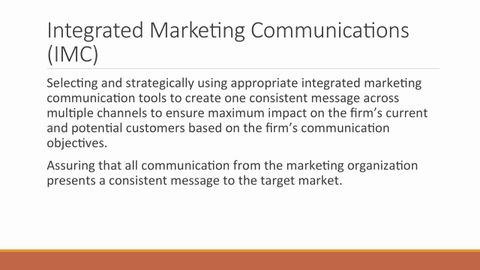IMC和通信過程 (IMC and Communication Process)
Jack 發佈於 2021 年 01 月 14 日  沒有此條件下的單字
沒有此條件下的單字- n. (c./u.)人;人們;人們;家人;員工
- v.t.居住
- n. pl.人們
US /ˈɪntɪˌɡret/
・
UK /ˈɪntɪgreɪt/
US /kənˈsɪstənt/
・
UK /kənˈsɪstənt/
- adj.一貫;與。 。 。一致;一貫的;合乎邏輯的
US /kəˌmjunɪˈkeʃən/
・
UK /kəˌmju:nɪ'keɪʃn/
- n. (c./u.)聯絡;溝通;訊息;傳播學;非語言溝通

